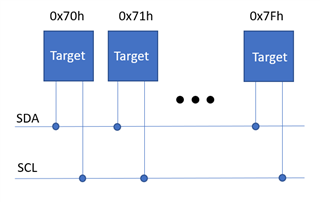Hello,
we developed an interface board which accepts connection of different types of external sensors. We would like to recognize what type of sensor is connected at speicific moment. One option would be to select type of connected sensor via for ex. 4-pin GPIO, where different combinations of zeroes and ones belong to the specific sensor. However, with 4 bits a limitation of 15 different devices arise, since one combination must be reserved for "no sensor isconnected" state also. In this way, a PCA9536 I2C I/O expander IC could be used (for example).
Another option would be to use some identification IC which would be part of sensor device. Since each identification - DeviceID is unique, interface board would be able to know which sensor is used at the specific moment. In such example, a translation table that includes a device description and DeviceID number should be present on the interface board's mCU. A number of connected sensors would be practicatlly unlimited in this example, since deviceID could be also a 64-bit number.
Are there any other ways suggested to implement mentioned functionality? Wireless solutions are not as much suitable as wire solutions, because environment is "noisy".
Many thanks,
Kind regards,
Dejan.
-
Ask a related question
What is a related question?A related question is a question created from another question. When the related question is created, it will be automatically linked to the original question.


